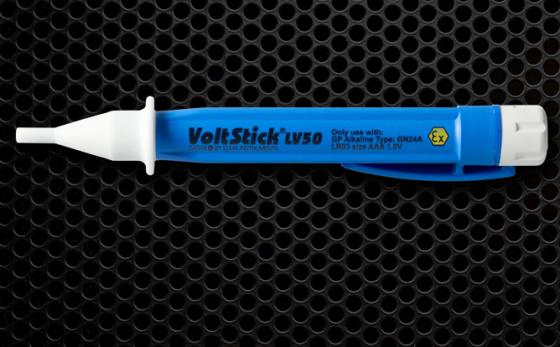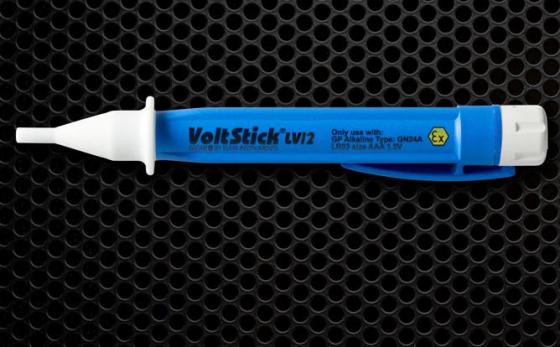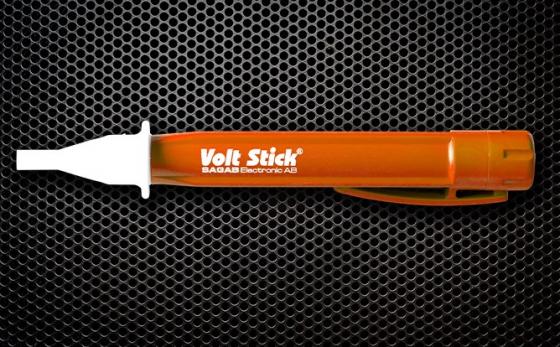Electrical Safety Checks for Natural Gas Utility Workers
Volt Stick is one of the only companies to make Intrinsically Safe Non-Contact Voltage Detectors used by Natural Gas Utility workers to check that metallic surfaces and pipes are 'safe to touch'.
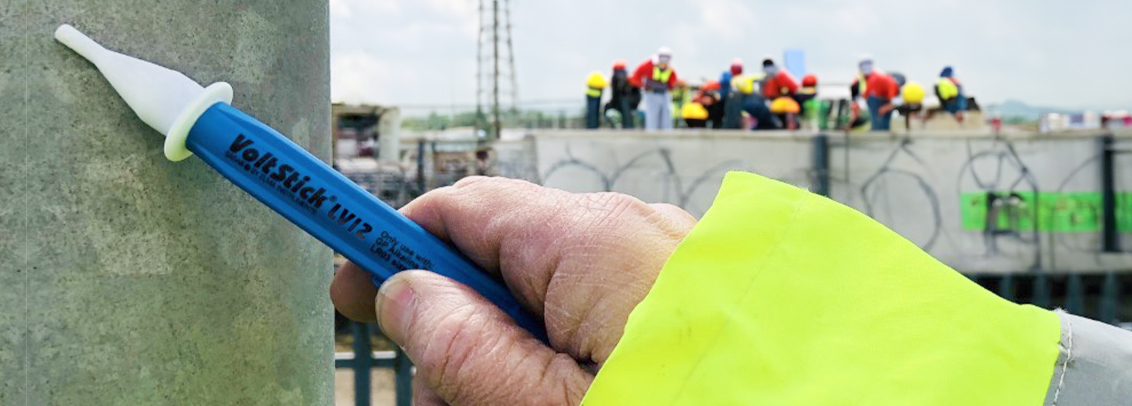
In 1998, a gas utility worker responded to a reported gas emergency at a residential property. While attempting to access a gas meter located beneath the metal kitchen sink, the engineer inadvertently touched the sink and the emergency control valve. Due to a fault in the property's electrical installation, the engineer suffered a severe electric shock, resulting in a tragic fatality.
This incident spurred the development of the Volt Stick LV50 and, more recently, the Volt Stick LV12.
The following overview is tailored for gas utility workers and provides guidance on identifying electrical hazards and working safely using either the Volt Stick LV50 or LV12.
This guide outlines considerations for designing your own safety procedures and is not intended to replace a safety procedure itself.
This guide covers the following subjects:
- What are the requirements of a Non-Contact Voltage Detector for the Natural Gas Industry?
- Enabling personnel, sub contractors and gas engineers to work safely and detect the presence of an AC voltage on bare metal pipework, fittings and appliances.
- Understand the operation of the Volt Stick device
- Be aware of the limitations of the device’s operation – and how to address these limitations
- Understand the maintenance requirements of the Volt Stick
- …and to understand the relevant safety requirements related to the Volt Stick’s operation
What is a Volt Stick?
Similar in size to a pen, Volt Sticks provide a convenient safety-checking device which can instantly detect the presence of a dangerous – potentially fatal – AC voltage, without the need to make a metallic contact with any potentially conducting surfaces or materials.
These simple-to-use, instant voltage detectors provide an essential, life-saving device for anyone likely to come into contact with energised components or materials.
Metal pipes, enclosures, cables and fittings are all possible electrical safety hazards – and a Volt Stick will instantly answer that first, most vital, question – ‘Is dangerous voltage present?’
How does a Volt Stick work?
Volt Sticks detect the electrical field emitted from an object with an AC voltage across it – by using the principal of ‘capacitive coupling’. Or, in very simple terms – hold the Volt Stick close to any object or surface which could be a potential hazard and – if an AC voltage is detected – the tip of the Volt Stick will illuminate red; it’s that simple!
What are the requirements of a Non-Contact Voltage Detector for the natural gas industry?
Gas Workers use non-contact voltage detectors to confirm the presence of hazardous voltages in their work area, and so they must be able to rely on these devices to detect voltages at and above their designated Touch Potential Safety Threshold.
Different Countries, States, Counties and Cities set the guidelines and regulations for Safety Thresholds and you should make sure that the Non-Contact Voltage Detector that you use is capable of detecting Voltages from that threshold.
The non-contact voltage detector you choose should be capable of with standing harsh conditions and should be as simple and easy to use as possible, preferably without multiple settings.
As gas workers will use their Volt Stick in potentially hazardous or gaseous environments, the Volt Stick LV50 and LV12 are both ATEX and IECEx certified to be intrinsically safe.
Therefore, the Volt Stick LV12 and LV50 were designed to be – and remain as – the safest, most reliable way to quickly check your work environment for any stray or unexpected voltages on any pipes, meters, or metallic surfaces.
How to use the Volt Stick LV12 or LV50
- Before coming into contact with any metal devices, metal covers, or surfaces in the work environment, ensure all metallic surfaces are tested using a Volt Stick LV12 or LV50
- Prior to testing the work environment, verify the functionality of the Volt Stick against a known live source, preferably within the vicinity of the location you intend to work
- If there are no live sockets or switches nearby, test the Volt Stick against the closest known live source.
-
If the Volt Stick fails to illuminate during testing, relocate to a non-gaseous area and examine the device by replacing the triple-A batteries after unscrewing the end cap
Please note: Only use approved batteries, as the use of non-approved batteries will void the ATEX and IECEx certification - ONLY trust the Volt Stick if it has been successfully validated against a known live source within your designated work area.
- Defective or damaged Volt Sticks should not be utilised and must be replaced immediately
Having successfully proved your device...
- When operating the Volt Stick, grip the unit by the blue body, avoiding contact with the white tip
- Ensure safe testing by allowing only the white tip of the Volt Stick to come into contact with any metalwork
- The white tip of the Volt Stick will illuminate red if it detects an AC voltage of 50 volts (LV50) or 12 volts (LV12) or higher
- Verify all metal surfaces using the tip of the Volt Stick, and refrain from touching any metalwork with other parts of your body
- Additionally, test other metalwork in close proximity to electrical cables, including those connected by earth bonding cables, before any contact
- If the Volt Stick lights up while testing a metallic surface, it indicates the likely presence of a potentially hazardous voltage.
Other reasons why the Volt Stick will illuminate:
There are a small number of situations or influences which may also cause the Voltstick to indicate the presence of a voltage and, if the Volt Stick provides a positive indication, you must always assume it is an actual indication of a dangerous voltage presence until all other possibilities are ruled out.
The Volt Stick may indicate a voltage is present if it is in close proximity to insulated cables.
In this case, test the same metalwork further away from the cables if possible.
The Volt Stick can also indicate the presence of a voltage if you are standing on or leaning against – or even in close proximity to – electric cables. These may be exposed, but they could be hidden in a wall or under the floor.
Be aware of your surroundings and move your body away from areas you may suspect have hidden cabling.
The electric field from hidden cabling can capacitively couple with your body and make the Volt Stick illuminate when it is moved closer to a metallic object.
If the Volt Stick stops illuminating when you move away, or when you switch off the suspect source then you are probably picking up a field from hidden cabling.
Your Volt Stick may also indicate a voltage due to the electric field from overhead light fittings.
Be aware if you are standing underneath lighting – particularly fluorescent tubes – they give off an electric field that can again couple with your body and cause the Volt Stick to illuminate as it is moved towards the metallic object you are testing.
Try to move away from or switch off the light fitting and see if the Volt Stick stops illuminating when it is moved towards the metallic object again.
And finally, there is a small chance that a Volt Stick will illuminate on some statically-charged materials such as plastics or aluminium.However, it is essential to assume that if your Volt Stick illuminates, then there is a potentially dangerous voltage within the work space.
If in doubt - do not touch any metalwork and consult an expert.
If a voltage is detected on any metalwork within the work area:
- Isolate the fuse to stop the indication
- Label the fuse
- Advise the customer of the next steps to be taken
What about voltages below your Touch Potential Threshold?
Although these are below the lethal threshold, they still pose a potential danger if present.
Very low voltages that are undetectable by the Volt Stick can still have enough energy to cause a spark and an explosion! Therefore, it is essential that a temporary continuity bond must be fitted before separating or disconnecting any pipework or fittings.
...and finally, once your work is finished, always check your Volt Stick again against a known live source.
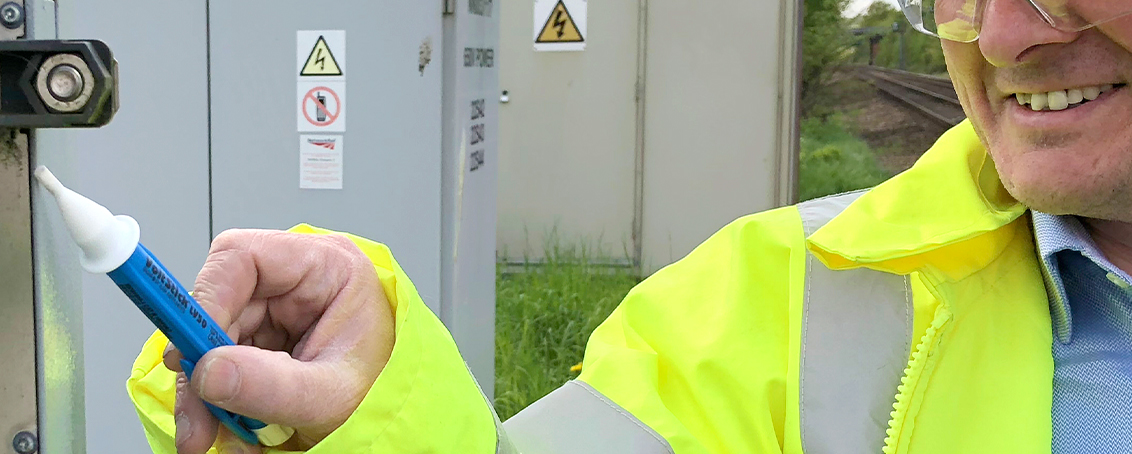
How to use the Volt Stick LV12 or LV50 - Summary
- The Volt Stick LV12 and LV50 are recommended as vital safety testing devices for all gas engineers working on site
- This test device is there for your safety against any dangerous - even potentially fatal - unexpected voltages
- Always use the Volt Stick detector prior to touching any exposed metalwork
- Only hold the blue body, not the white tip, of the device
- The only contact with exposed metalwork should be via the tip of the Volt Stick
- When testing your voltage detector, do not touch any other metalwork with any part of your body
- Your Volt Stick should always be tested before and after each job
- Any faulty or damaged Volt Sticks should never be used and should be replaced immediately
Volt Stick is the choice of natural gas utility companies worldwide, including...

More questions about Volt Stick LV12 & LV50 or electrical safety checks for gas engineers?
If you have any questions regarding the use of the Volt Stick LV12 & LV50, or safe electrical checks for on-site gas engineers, please contact the Volt Stick team by emailing us at info@voltstick.com
Read more:

